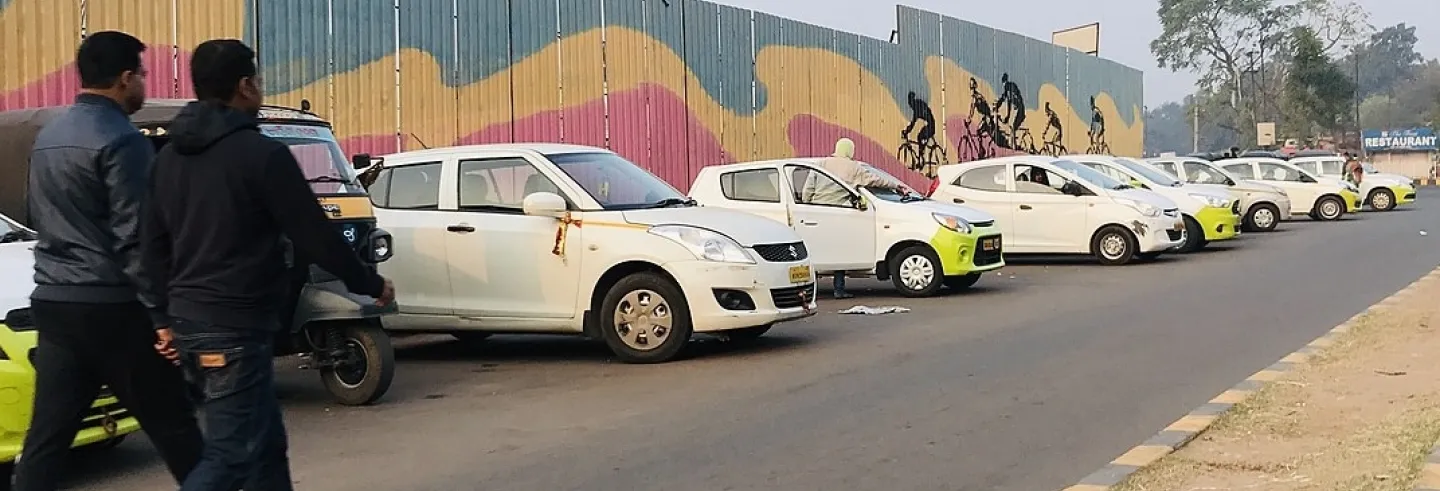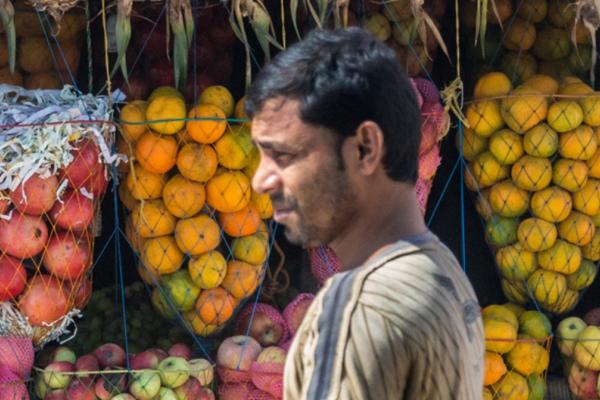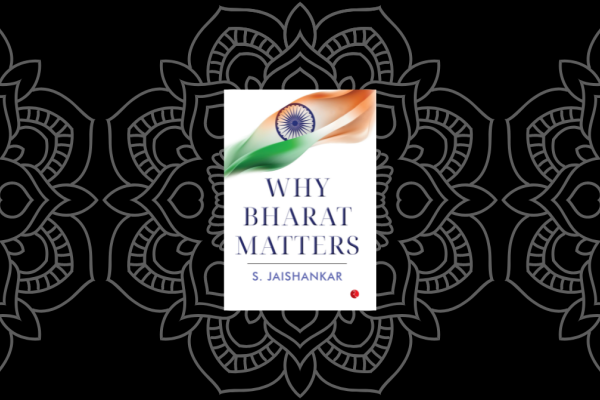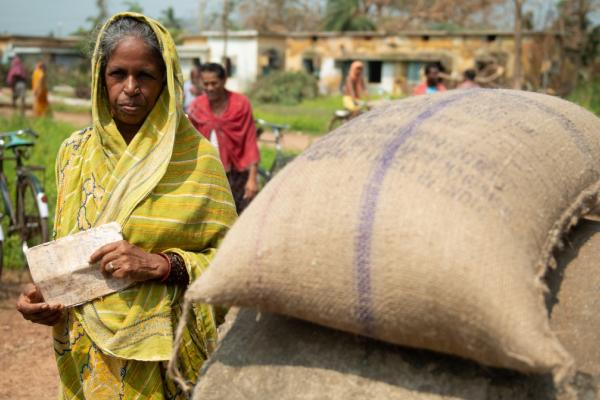On the Zomato page for raising funds for their “delivery partners,” the co-head of the food-delivery company, Deepinder Goyal, appeals to customers to contribute towards providing food, income support, and insurance for workers in the time of the Covid-19 pandemic. He notes that due to the contractual nature of the work and the low incomes, the workers have little to no savings to get them through the lockdown period. In the same breath, Goyal asks the question on everyone’s mind: why doesn’t Zomato itself take responsibility to offer these benefits to the workers? His response is succinct: "It’s beyond our financial viability.” Yet this is a company whose net worth was Rs 1,900 crore in September 2019 and which raised another Rs 353 crores in funding earlier this year.
Some of the workers delivering food for Zomato were probably going hungry even before the lockdown, evidenced by the images from two years ago of a worker eating from a delivery parcel. Goyal’s point on workers’ precarity therefore speaks not to the lockdown specifically but to the general conditions of low incomes in gig work.
Zomato is not the only defaulter here. Its rival Swiggy, or ride-hailing companies like Uber and Ola, all of whom depend on ‘feet on the ground’ work performed by people enduring high levels of risk, are all dependent on the ‘generosity’ of others. A curious system seems at work here. Companies that have continued to operate and even expand operations during the lockdown are enforcing conditions of work (including the mandatory use of Aarogya Setu) but are outsourcing responsibility for the risks that delivery workers endure to consumers, by asking them to contribute financially to support workers.
[There] continues to operate in India a sizeable gig economy that never even had labour laws to begin with because it seemingly has no labouring class.
What makes this possible are the conditions of the gig economy: a form of work that has no recognisable employer or employee. While the debate on labour laws suspensions rages on, there continues to operate in India a sizeable gig economy that never even had labour laws to begin with because it seemingly has no labouring class. In a situation of largely jobless growth, the gig economy entry has been celebrated for providing new jobs and opportunities for work.
The world of work has seen significant shifts in the previous decade, with technology increasingly integrated into varying forms of work. These new technological interventions have been sold to us as ‘disruptions’ in the working of the old economy. Uber, Ola, Zomato, and Swiggy represent this new gig economy, where tech corporates float platforms that are ‘lean’ without significant asset ownership—no cars, no restaurants (Woodcock and Graham 2020, 45)—and where there are no workers, only a world of self-employed, independent contractors who used these platforms to engage consumers. Although estimates of workers in the gig economy are notoriously hard to come by, they are estimated at over 70 million globally (Woodcock and Graham 2020, 1).
Rather than representing a form of disruption, the gig economy extends capitalism.
This gig economy had been celebrated by the Niti Aayog, which credited Uber and Ola alone for creating 2.2 million jobs in the wake of an unemployment crisis. In their public offering last year, Uber reported 30 million cars attached to its platform in India, while in food delivery, HR firm Teamlease reported the creation of 800,000 positions. But the high and rotational attrition in the gig economy make these estimates sketchy at best and the absence of regulations in the gig economy raises questions about the quality of these jobs.
The gig economy imagines that it is a world of equal stakeholders: tech corporates, service providers and consumers. But in reality, gig platforms are much more than just a point of connect between service providers and consumers. Gig platforms operate very much like employers in determining how work is to be conducted, seen for instance in Zomato making the Aarogya Setu app mandatory for its delivery workers. Companies in the gig economy are keen to distance themselves from the tag of being employers, because it allows them to limit expenses that would otherwise be incurred on workers: expenses that relate to mitigating and insuring against risks faced by workers.
Rather than representing a form of disruption, the gig economy extends capitalism: where one group owns property and assets necessary for production; and another, which does not, works for them. The gig economy imagines this with a slight difference. Tech corporates see themselves as providing aggregation services for independent service providers such as drivers or delivery personnel, who use the platform created by the company to connect with consumers. These service providers own some of the assets necessary for providing services, like bikes, cars, or smart phones. But given that the technology needed for building platforms is owned by corporates, this remains a system where one group owns while the other labours.
The nature of [gig] work necessitates contact with numerous people significantly raising the risk workers undertake. But because they are termed as independent contractors […] technology companies that own gig platforms can shirk legal responsibility for worker safety.
Much like industrial labour, gig workers who undertake the physical aspects of labour are at risk. In the app-based food delivery or in the transport network, this has been seen in the form of road accidents. Women beauty workers speak of the risk of sexual abuse as they enter unknown homes to work. In the time of Covid-19, delivery workers who continue to operate face an amplified risk. The nature of the work necessitates contact with numerous people, significantly raising the risk workers undertake. But because they are termed as independent contractors or ‘delivery-partners’, and gig platforms are fashioned as ‘aggregators’, technology companies that own gig platforms can shirk legal responsibility for worker safety.
Terms of Employment
The sticky point legally has been to account for gig corporates as employers and those working for the platform as employees. This has been the subject of legal scrutiny and debate around the world. Most recently, California, the hub of tech corporates in the United States, passed Assembly Bill 5, legislating that drivers and delivery partners be classified as employees. The bill codifies a test to determine whether those hired in the gig economy constitute workers or not, a part of which rests on the notion that employees work in conditions determined by the employer. Under this test, gig economy workers were seen to be under the “control and direction of their employer” as the California Supreme Court judgement stated.
[On] close examination, gig platforms operate like employers: dictating and defining work practices, both prior to and in the times of Covid-19.
Carefully considered, in India too, there are a number of similar practices that gig platforms term as essential for the worker to perform. These include having to a wear a uniform bearing the signage and logo of the company, or use the delivery bags that the company mandates, with financial penalties imposed on workers who fail to comply. More significantly, workers have to adhere to price and incentive structures determined by the platform. Thus, even as gig work is supposed to be flexible, the income structure forces workers to work for more than 8 hours and even weekends in order to earn a living wage.
In the time of the pandemic, these essential practices have increased. Temperature checks, wearing of safety gear, and cashless delivery are all part of this. Of course, these are necessary for the safety of the worker and the consumer, but there is no negotiation that takes place between these two stakeholders. Rather, gig platforms have taken the lead in determining and mediating on questions of risk and safety for the two parties, even as it claims to only operate as a point of contact between the parties. In other words, on close examination, gig platforms operate like employers: dictating and defining work practices, both prior to and in the times of Covid-19.
The question of welfare has been discussed in terms of state action. But there is also much to be gained from posing it to the gig economy, which has found a way to outsource risk to its workers and responsibility of welfare to its consumers.
The problem here is not that these health practices are being made mandatory, but that the enforcement of these practices is immediately indicative of how implicated gig platforms actually are in the performance of gig work. This has only entered trickier terrain with the mandatory use of Aarogya Setu. If the gig firm is only a platform, and not an employer, does it have the authority to set in place such mandatory practices? And if it does, can they shirk responsibility for providing for the basic welfare and safety of their workers?
Risk for whom? Safety for whom
The gig economy could always be understood as a disproportionate division of risk. It has taken a pandemic to realise just how serious the outcomes of this division are. For a world in lockdown, the shutdown in the gig economy has meant that platforms are under no obligation to provide financial remuneration to drivers or delivery professionals for the loss in pay they suffer.
Instead, many of these platforms have tried to outsource this responsibility to consumers, appealing for contributions to financial assistance funds. Framed as appeals of compassion, rather than as obligations to workers, these take away from the vital political questions we ought to be raising: what is the responsibility of gig platforms to their workers? The question of welfare has been discussed in terms of state action. But there is also much to be gained from posing it to the gig economy, which has found a way to outsource risk to its workers and responsibility of welfare to its consumers.
[Gig] firms have found the pandemic an opportune moment to expand their operations […] This has been made possible not so much by technology but more by the availability of this at-risk labour force.
In this world of temporary and often low paying work that the gig economy creates, workers can only live and earn from gig to gig without a safety net to fall back. The significance of legal recognition as a worker is that laws mandate some mitigation of risk and insecurity that workers are subject to by employers.
Minimum wages, paid leave, severance packages for loss of work, notice periods for job loss and contributions towards retirement were instituted keeping in mind the weaker position of workers. None of these can be availed by gig workers who are seen as independent contractors. Shortfalls in incomes can only be met by undertaking higher risk, by logging in for longer to secure more work. Even with the minimal safety equipment provided to them currently, gig workers engaged in delivery put themselves—and by extension their families—at considerable risk. Insurance for instance, is only available if workers test positive, but there is be little incentive to be tested at all. Apart from the increasing social stigma around Covid-19, the cost of testing is high and means loss of work for a day, if not more.
One can make the argument that in a stagnant economy the very availability of such jobs should be weighed against the risk that accompanies them. But this would only make sense if those creating these jobs took responsibility for the risk that arises from the work. This is particularly relevant when gig firms have found the pandemic an opportune moment to expand their operations, raise capital, and enter into new domains, such as delivering groceries and other goods. This has been made possible not so much by technology but more by the availability of this at-risk labour force.
[The] new form of work embodied in the gig economy—of equal stakeholders coming together on virtual platforms—has never existed. Instead this form of work is rooted in older forms of exploitative conditions.
Had this relationship of employment been legally recognised as such, workers would be in a far more secure position to demand that they be protected financially and physically from the risks they endure. Instead these workers have to now see if they qualify for receiving support—which firms such as Swiggy and Zomato have made clear will only come in the event that drivers test positive for Covid-19. How these funds are disbursed to workers remains unclear, and there have been reports of drivers who claim they have not received any assistance.
The Value of Work
In a recent piece, Pratap Bhanu Mehta makes the argument for why compassion is the dullest form of intervention we can seek. Soaked through with questions of morality instead of politics, compassion often limits possibilities of action. Instead of the focus on compassion, which gig corporates seek to build on, it would do us well to return to the firmly political terrain of examining the structure of the gig economy and indeed the world of work at large.
This political focus highlights that the new form of work embodied in the gig economy—of equal stakeholders coming together on virtual platforms—has never existed. Instead this form of work is rooted in older forms of exploitative conditions. Insecurity for workers who are subject to conditions of contingent work are heightened, while any basic right that is made possible under labour laws is denied to them as they are classified not as workers but as independent contractors.
In looking at and considering life beyond Covid-19, an urgent task would be to return the question of gig workers to the political terrain of rights rather than the moral question of compassion.
Capitalism has always been accompanied by negotiation and conflict between capitalists and the working classes. While the origin of capitalism is grounded in the belief that the capitalist and labourer are equals entering into a contractual agreement of employment, given that capitalists as employers often set the terms of work- they have enjoyed an upper hand. Further, these terms often amplify risks associated with any kind of work: both the physical risks of the job, and the risk associated with inadequate wages or of losing a job suddenly. These risks have been the basis for early unionising and for working people to renegotiate their agreement with capitalists. Industrial accidents caused by the exploitative conditions of work most significantly highlighted the power that capitalists wielded against labour. 1 The infamous Triangle Shirtwaist Factory incident of 1911 in the US and the Tazreen Factory fire in Bangladesh in 2012 had significantly high death tolls caused by locked doors to ensure workers did not take unauthorised breaks. The Triangle Factory led to the rise of unionising in the US, notable also for women workers’ participation in it. But this is predicated on a legal recognition of the employer and employee. A century after Triangle, the Tazreen Factory fire could still happen because primary employers, including a number of global clothing brands, denied responsibility for work conditions. Through years of labour struggles, and by ensuring legal recognition that employers bear responsibility for their workers in the course of the working day, industrial workers were been able to secure the most basic of rights: an eight-hour work day, health covers and decent work conditions and contracts (McEvoy1995).
In looking at and considering life beyond Covid-19, an urgent task would be to return the question of gig workers to the political terrain of rights rather than the moral question of compassion. The halting of work and the looming recession should certainly not become the grounds to justify terrible forms of work that currently exist, something to especially consider when labour laws are being suspended by state governments. History has been replete with these mistakes. One can only hope that the pandemic shines a harsher light on what was always present: if equal stakeholders share existential risk so unequally, then perhaps it is time to rethink the gig economy.









